Day 8 (December 28th, 2014)
After breakfast a new guide picked us up and drove us through Tokyo. The city is huge, we were on the road all day and still in the city area. The daily schedule was very extensive.
First we went to “Sensō-ji”, an Asakusa shrine (Buddhist temple). It is Tokyo’s oldest and most important temple. At the entrance, a huge lantern hangs in the archway, behind it are rows of shops and at the end the shrine. You can buy all kinds of good luck charms there.
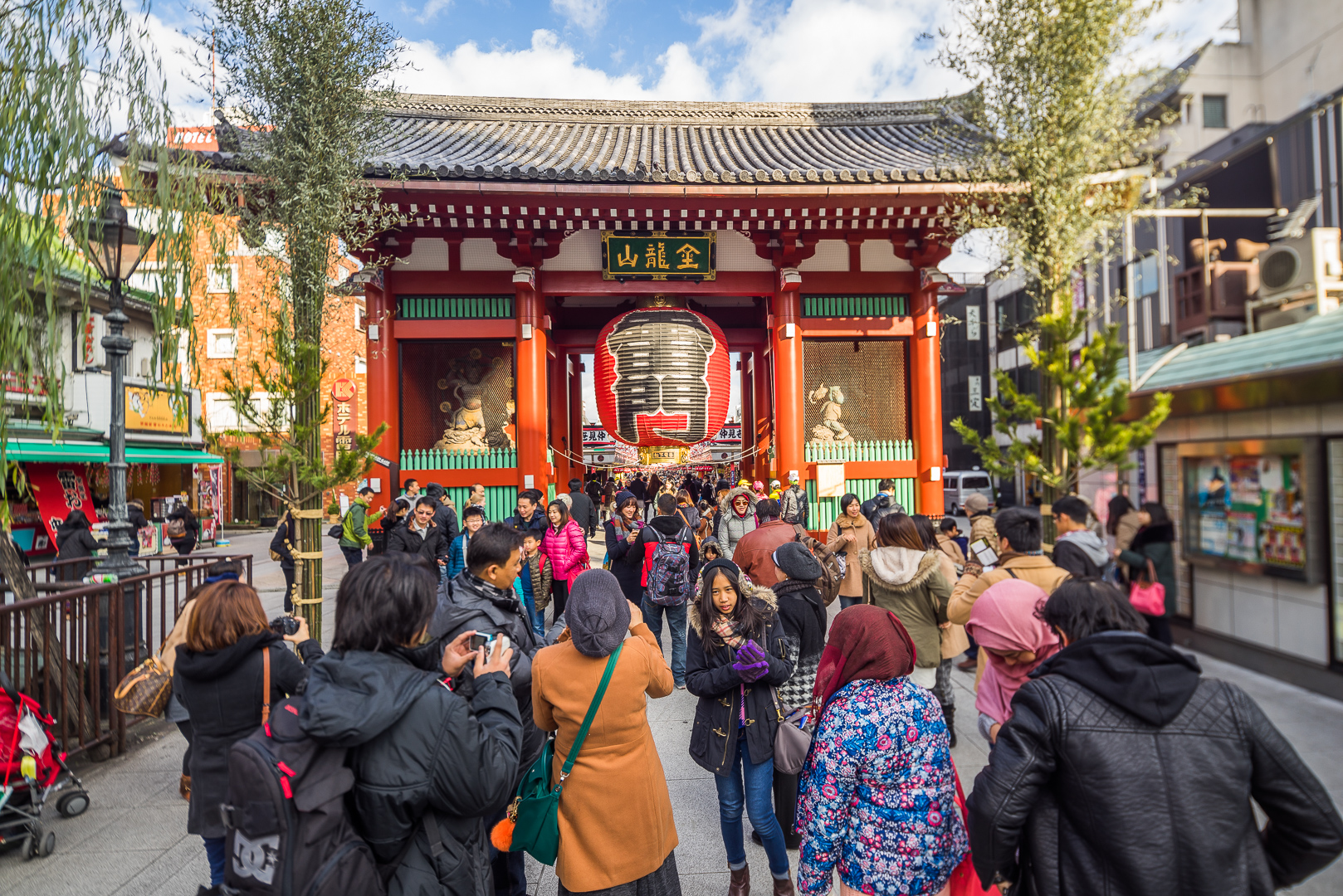
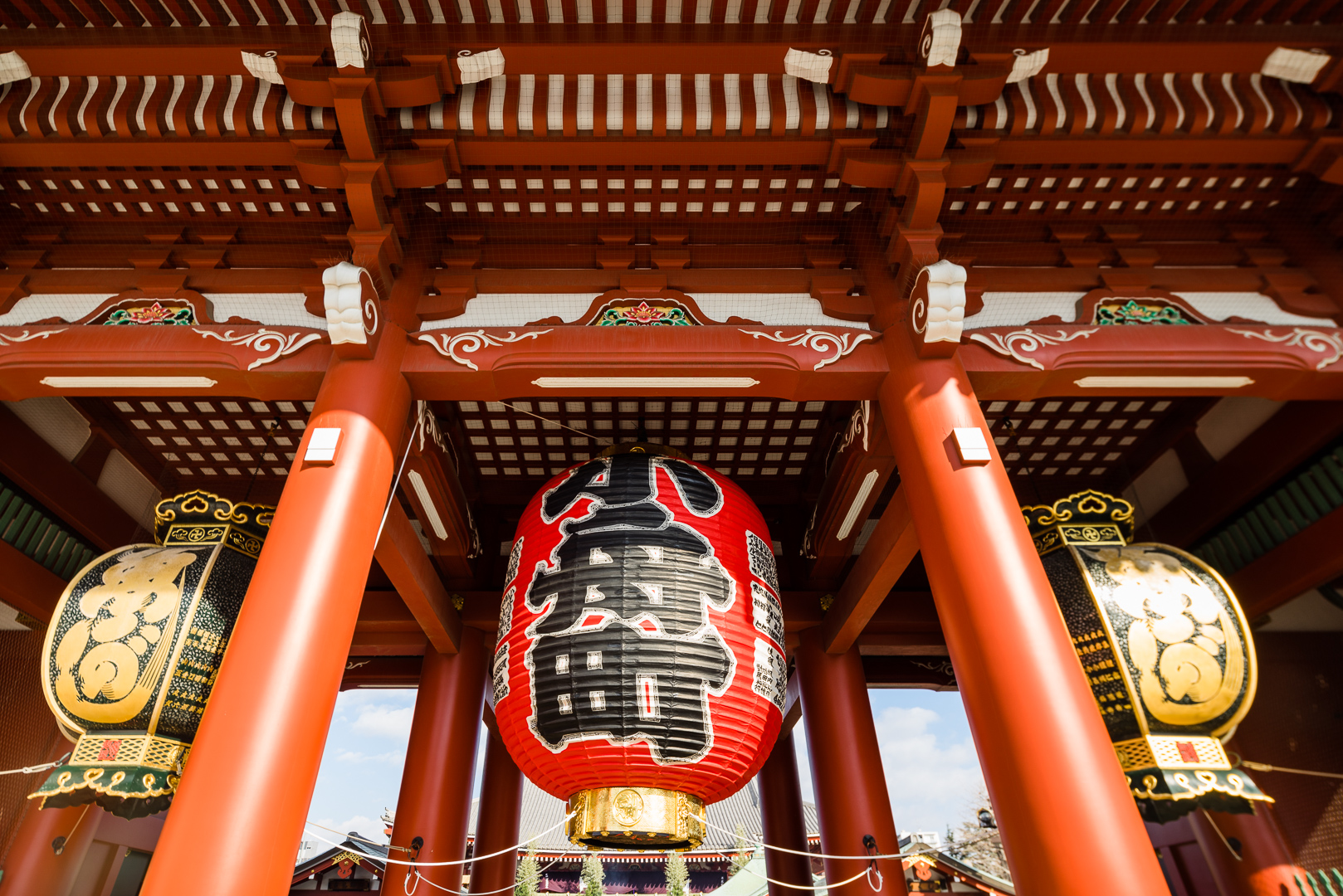
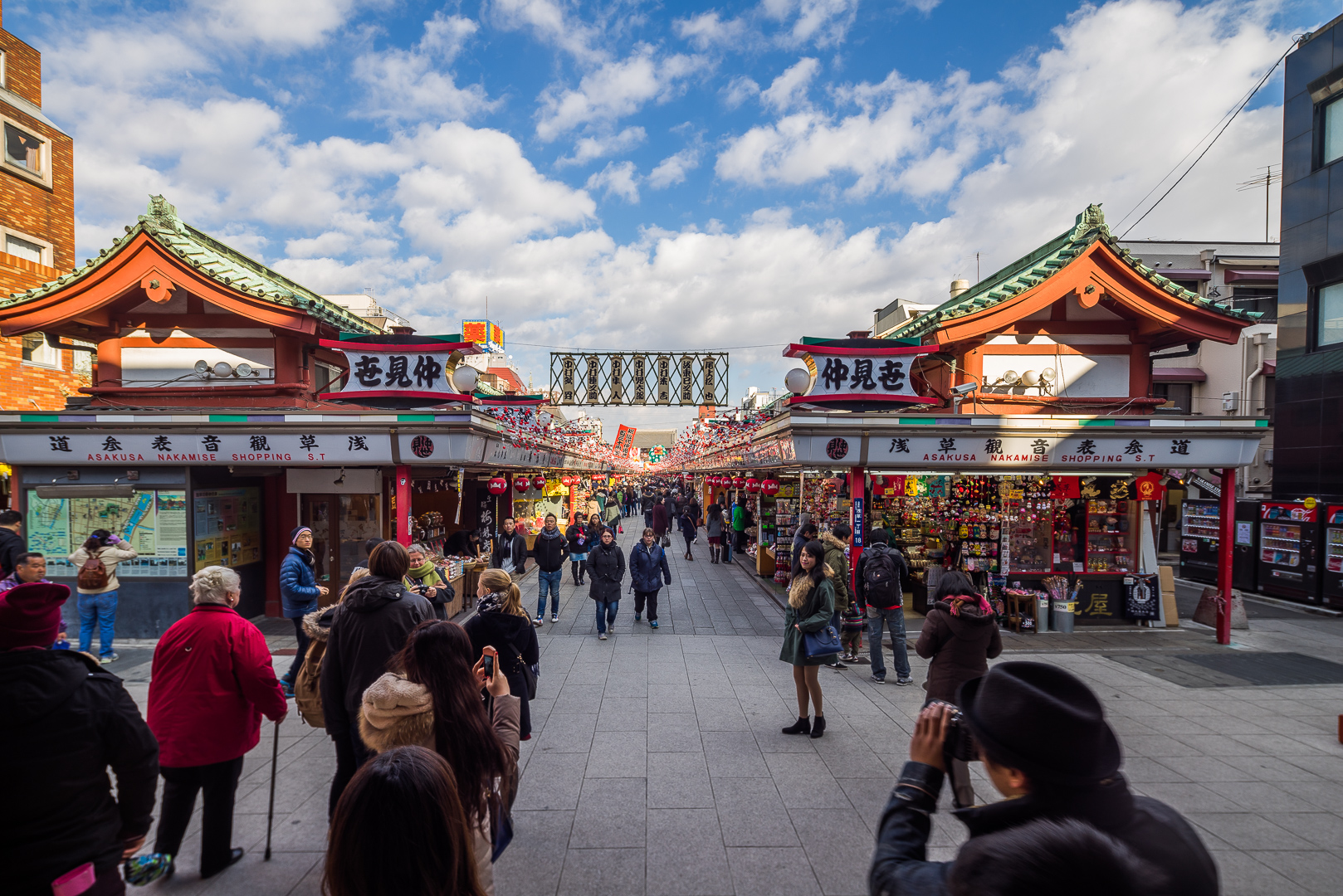
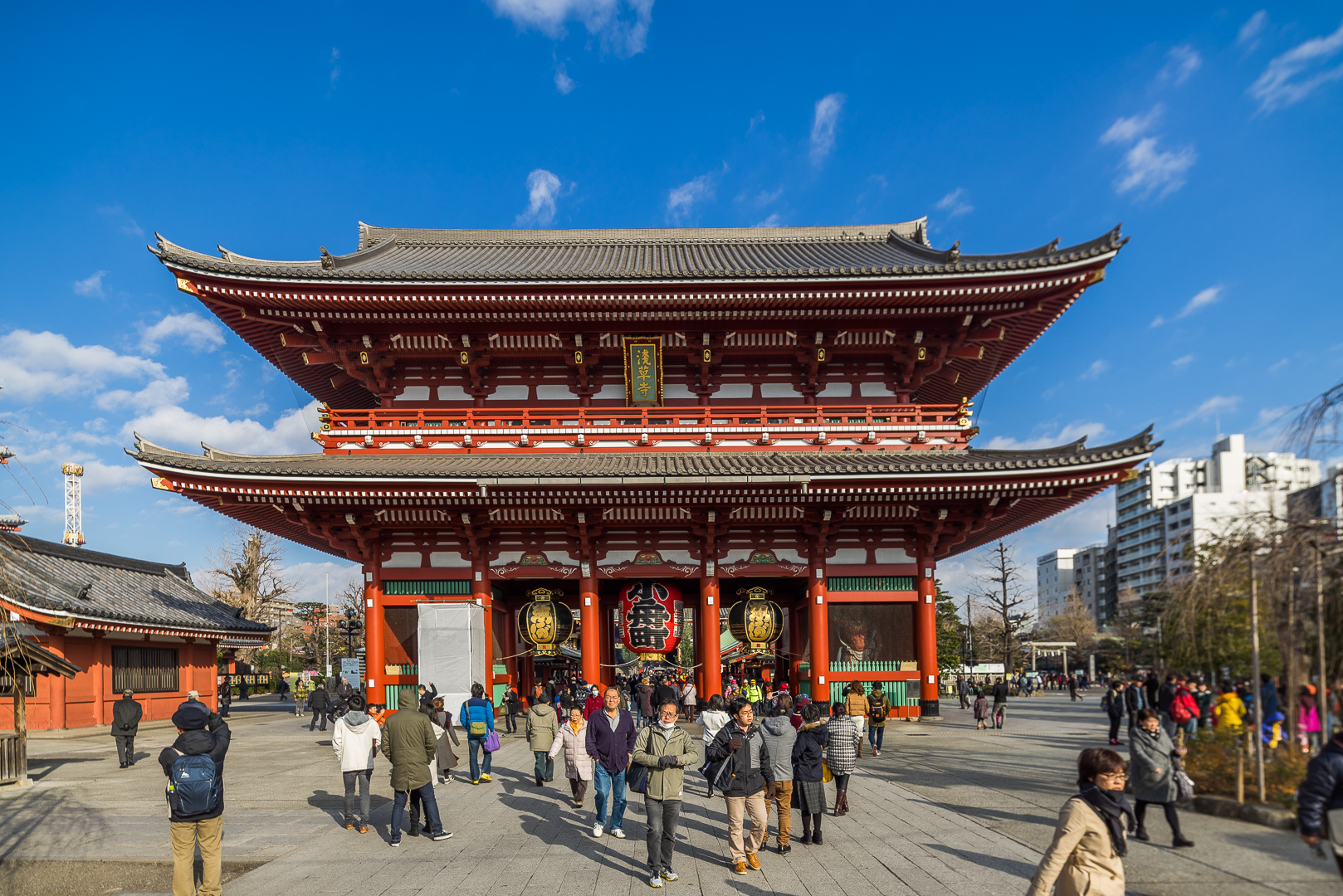
Next to the temple is another five-storey pagoda. Japanese pagodas (tō) are considered to be an image of Buddha’s burial place. Almost all Japanese pagodas consist of either three (sanjū-tō) or five (gojū-tō) floors. They have a square ground plan and narrow a little with increasing height.
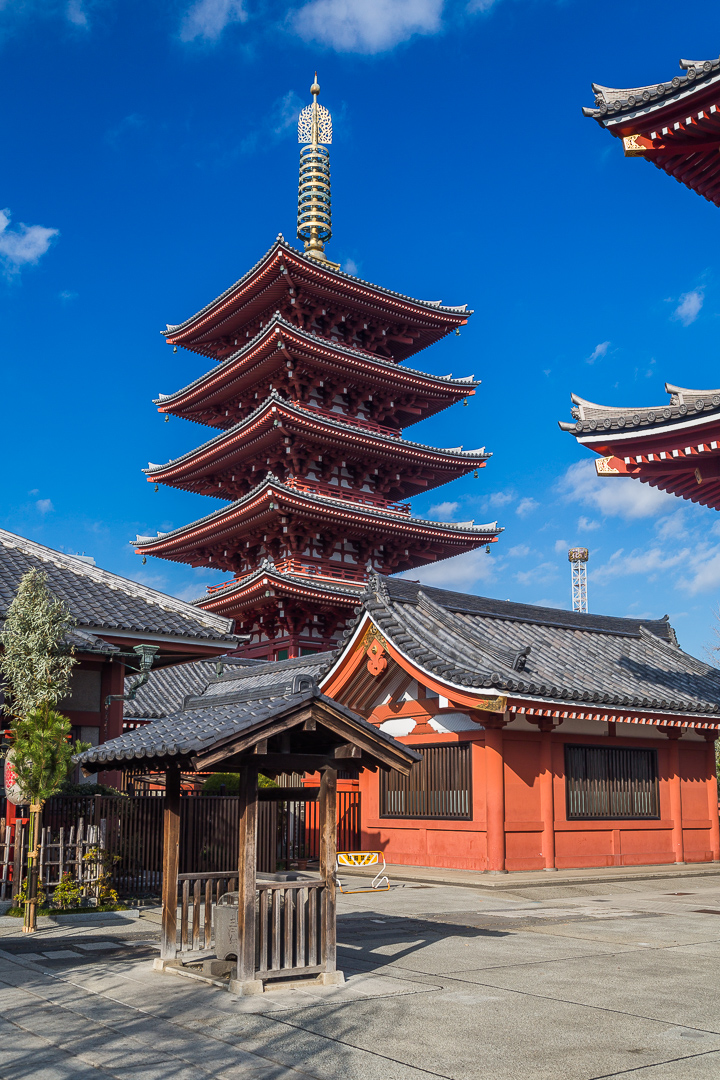
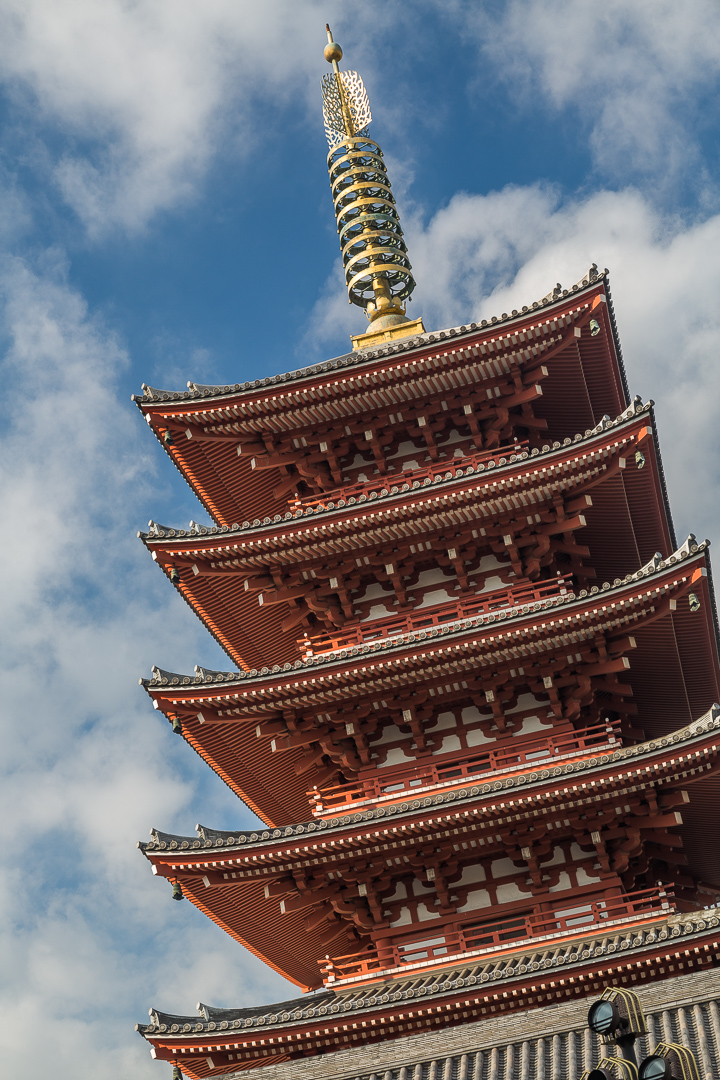
They represent the oldest type of pagoda in Japan, which was adopted by China and Korea in the sixth and seventh centuries. Since that time the multi-storey pagodas have hardly changed at all. In China and Korea, on the other hand, they have now been almost completely replaced by stone towers of different styles. This is partly due to the fact that the traditional timber construction method in Japan has fundamentally changed less than in China, but also to the fact that the structure of the pagodas has proved to be particularly stable against earthquakes. This is why pagodas are particularly common among the oldest wooden buildings in Japan.
One of the secrets of resistance to earthquakes lies in the central pillar, which in most pagodas is not firmly anchored in the ground but, so to speak, begins to float freely at some distance from the ground. The pagoda therefore rests on several symmetrically distributed columns and can even be moved a little if necessary.
The individual poles of a pagoda are - as in other traditional wooden buildings in Japan - not nailed, but rather plugged into each other and wedged, which allows a certain degree of mobility and slows down vibrations within the building. In addition, an earthquake creates a vibration pattern that absorbs the shocks because each “floor” moves in an opposite direction. This phenomenon is known in technical jargon as the “snake dance” of pagodas.
The next destination was a Kabuki theatre, which we viewed from outside. Kabuki is the traditional Japanese theatre of the bourgeoisie from the Edo period and consists of singing, pantomime and dance, with white painted faces and costumes.
We were also only able to see the Sumo theatre from the outside, wrestling scenes were painted on it.
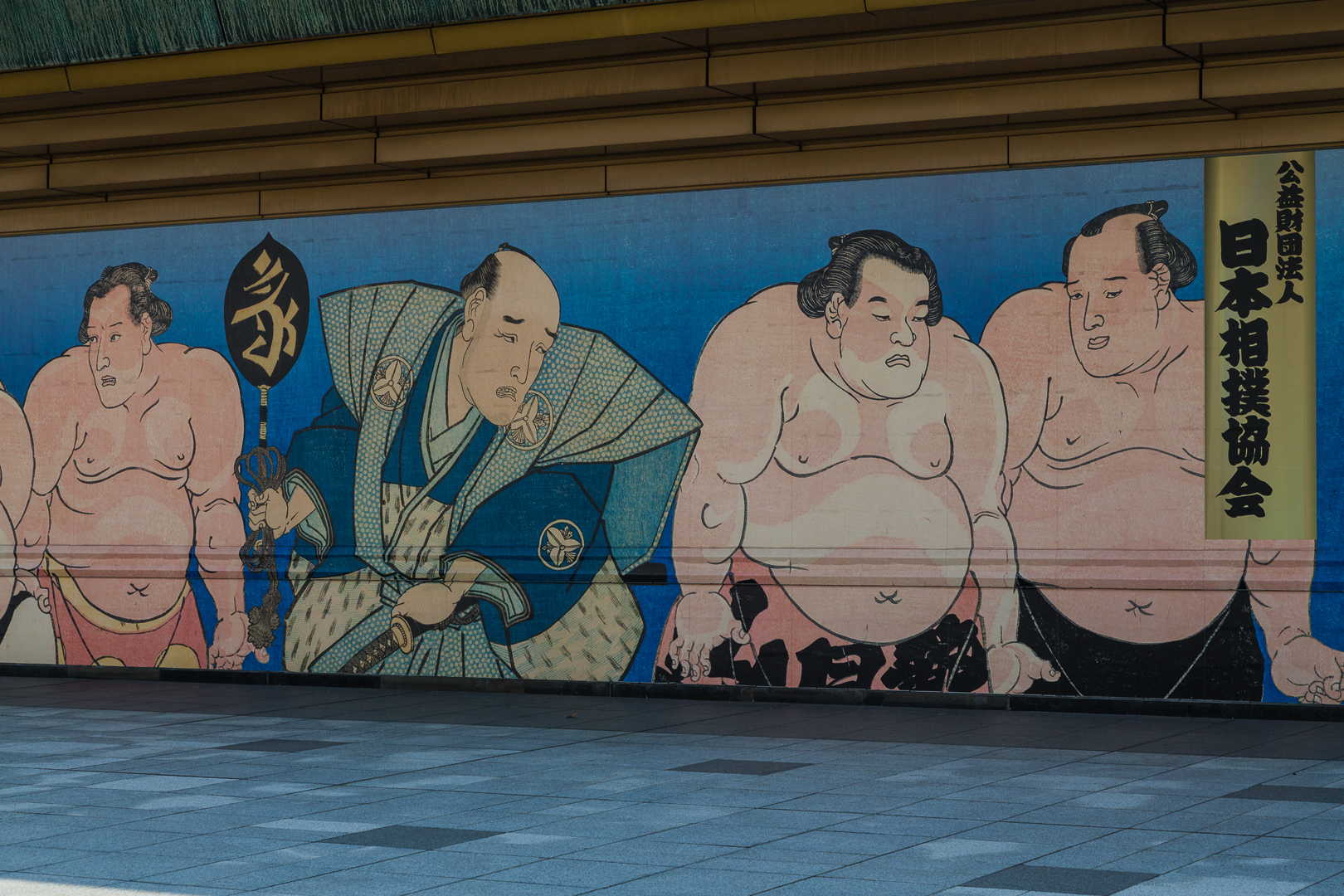
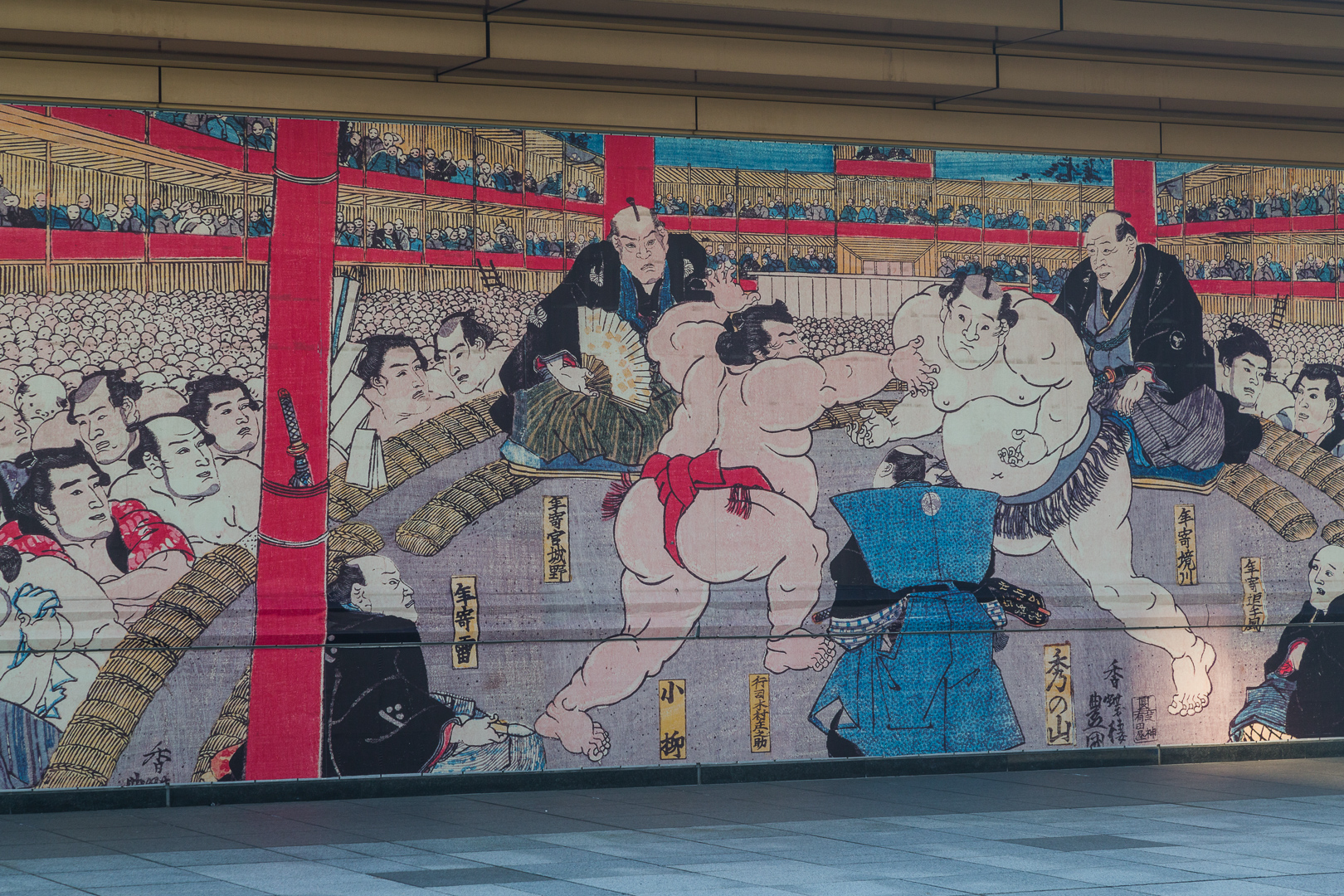
Afterwards we drove by the imperial palace, which is hidden behind high trees on a huge island in the middle of Tokyo. Only the guard houses at the corners (which can almost pass as a small palace in its own right) are visible.

Our guide told us, that the path around the water moat is a very popular about 5km long jogging route.

After a tasty lunch with sashimi we went straight on to the Akihabara quarter. This is a loud and hip technical district with bright advertising signs, cos players, manga shops and many technical shops where you can buy all kinds of technical equipment. A mecca for nerds. You don’t have to like it, but you should have seen it.

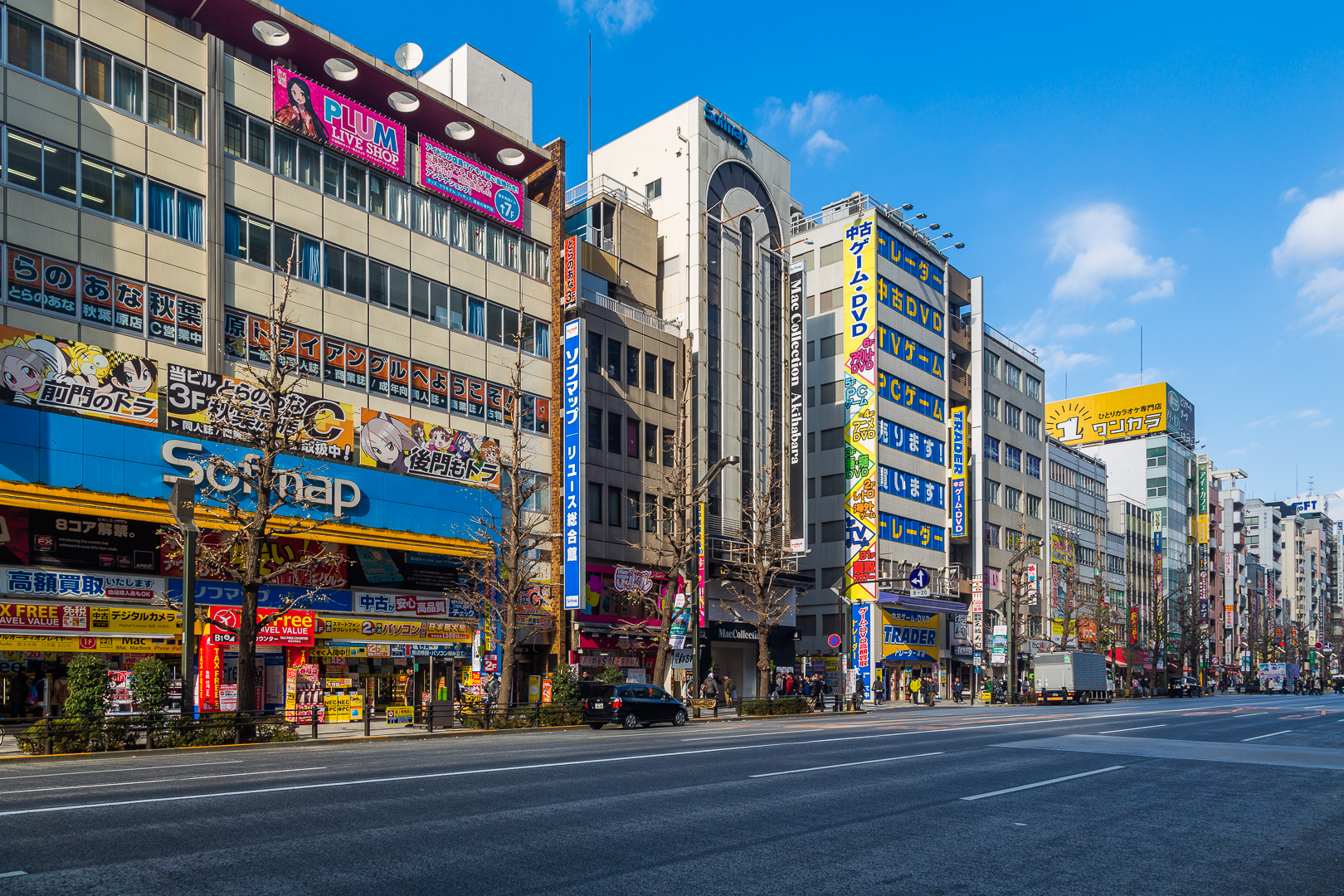
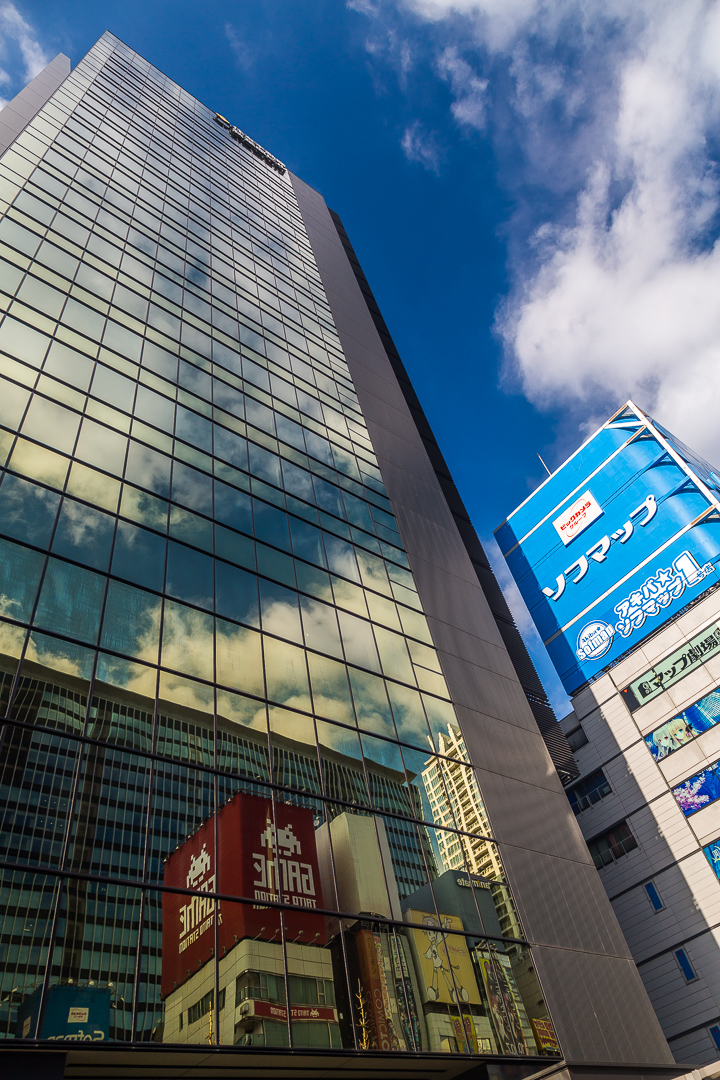

Then we drove through the Ginza quarter. Once again it was very different with chic shops and expensive brands like Chanel, Prada, Louis Vuitton etc. The girls found that much more interesting 😉
Further we went to the shrine for war victims, the “Yasukuni-junja”. Because war criminals are also buried there, this shrine is quite controversial in Tokyo. A simple archway leads to the small temple.
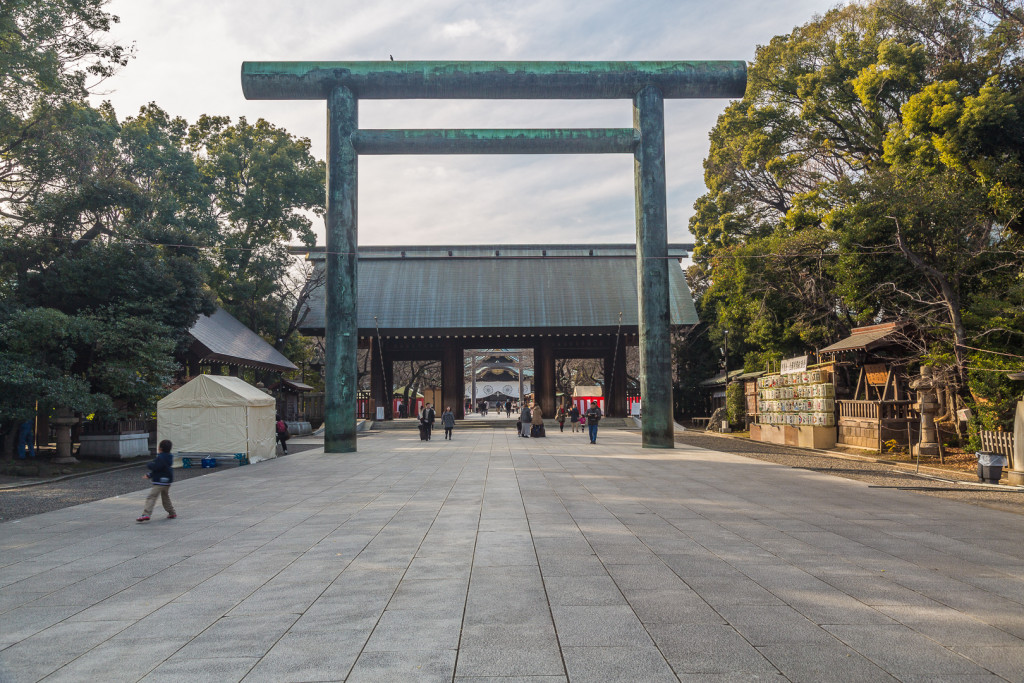
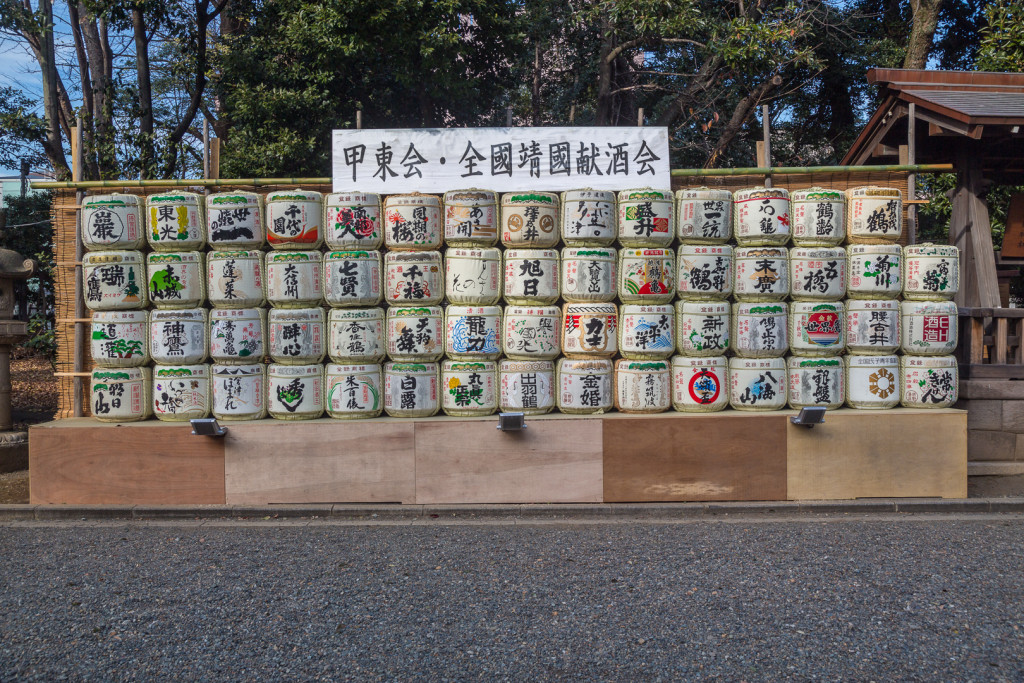
From there we drove on to Shibuya. The commercial center of Shibuya with numerous shops and offices is located around Shibuya station. In front of the station is the statue of the “faithful dog” Hachikō, one of the most famous meeting places for dating in Japan.
In Shibuya we stopped briefly at the famous “all go” crossroads. This has a special traffic light system where all pedestrian lights turn green at the same time and at evening-peak times up to 15,000 people cross the intersection in all directions simultaneously.
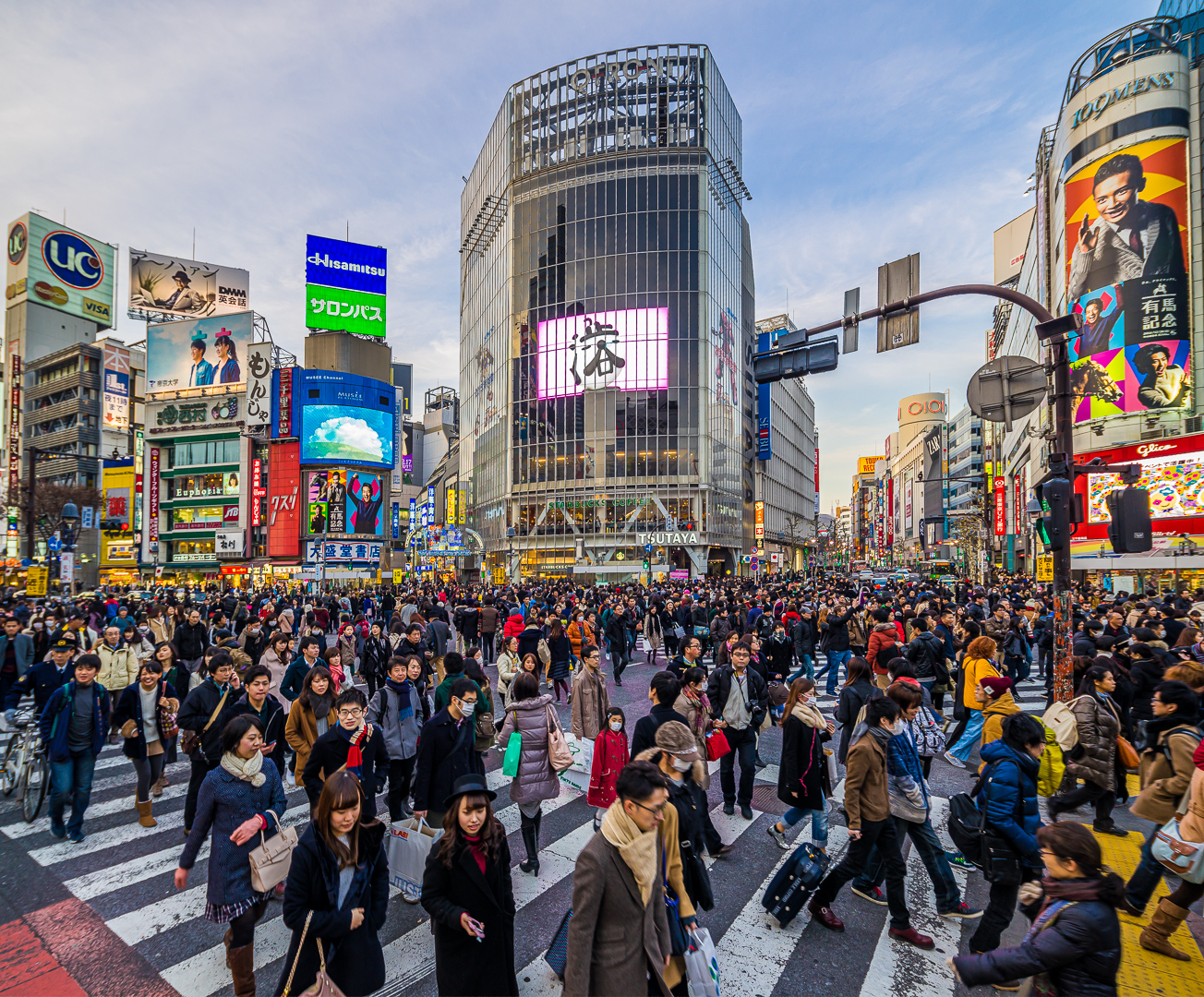
We continued on to the “shrine of the foxes”. There are at least 100 statues of foxes and dogs, all of them with a red “bib”, which stood along the paths. Our guide told us, that one of the statues would show another animal and so we started our search. We actually discovered it, it is - attention Spoiler - a frog. So you get as a guide your troop for a while busy!
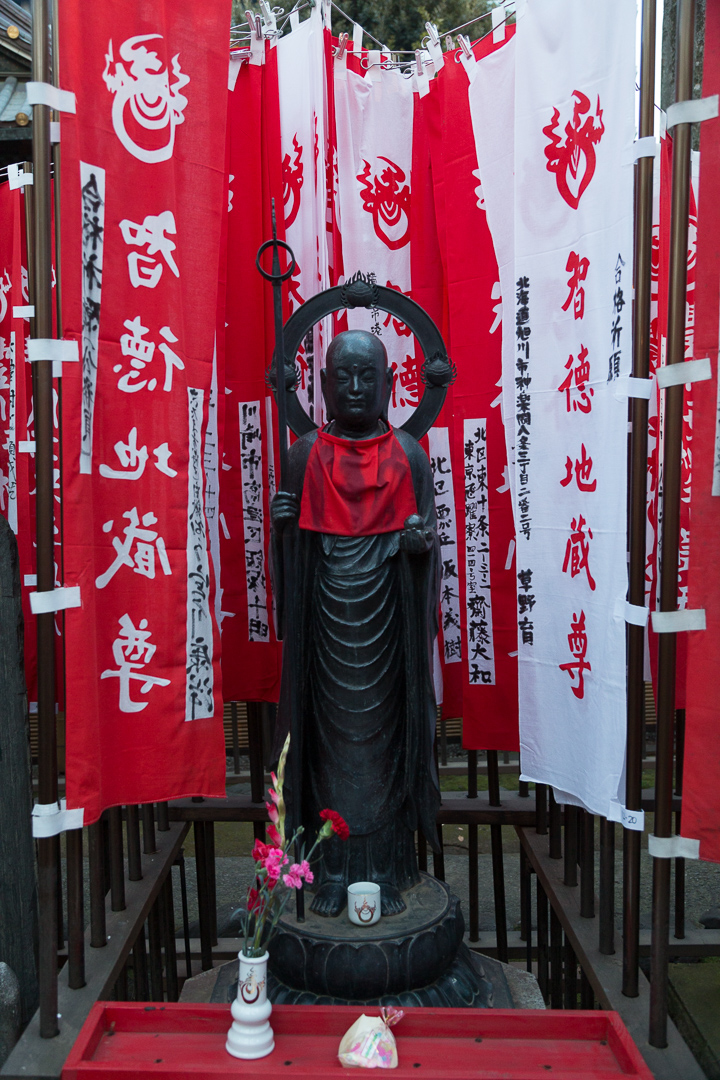
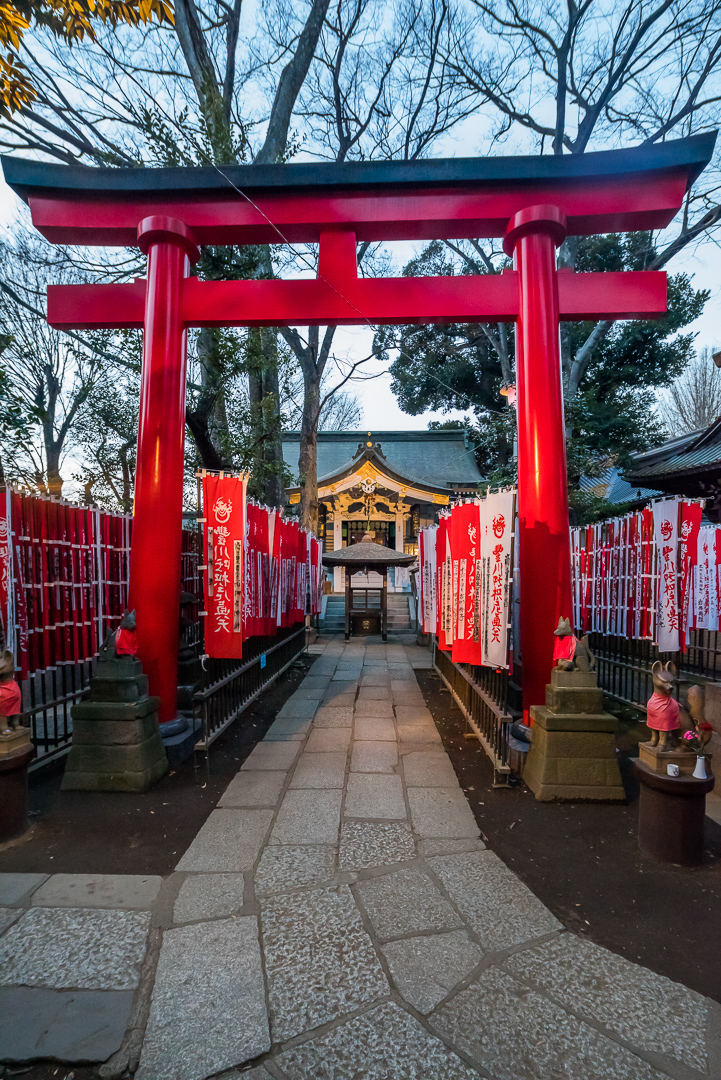
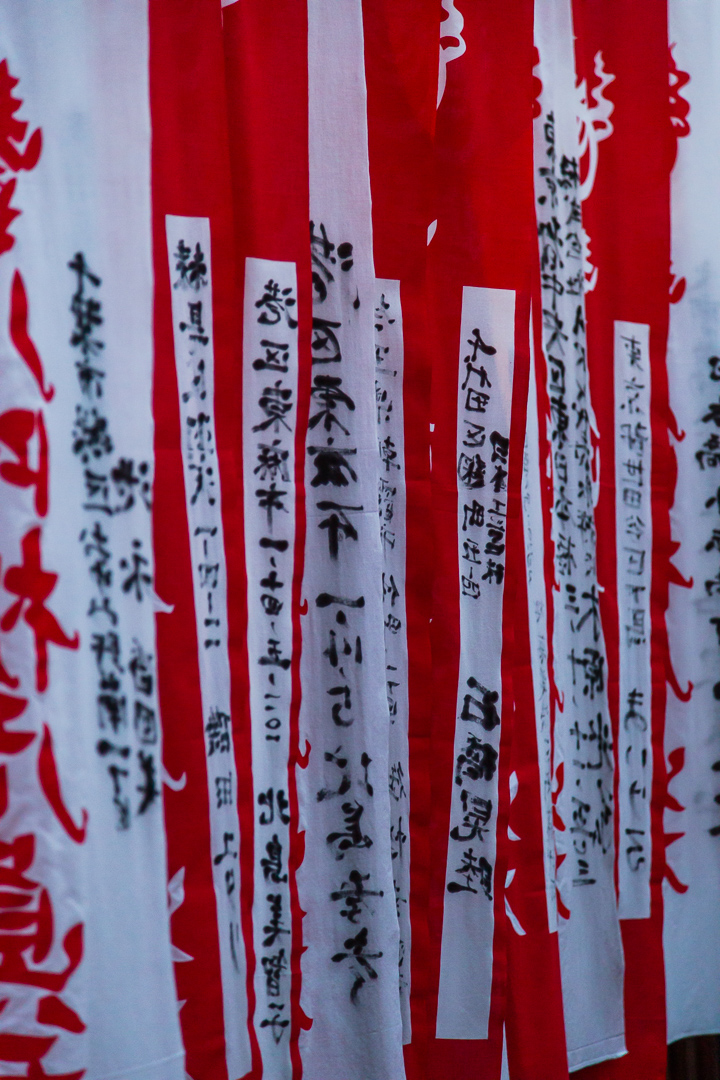
Finally we passed the Meiji shrine, which is located in a large park. So we could stretch our legs a little after sitting in the car.
On the way back to the hotel we made a short stop in the youth quarter “Harajuku-Street” (full, loud and garish) and took some more pictures there in the dusk.
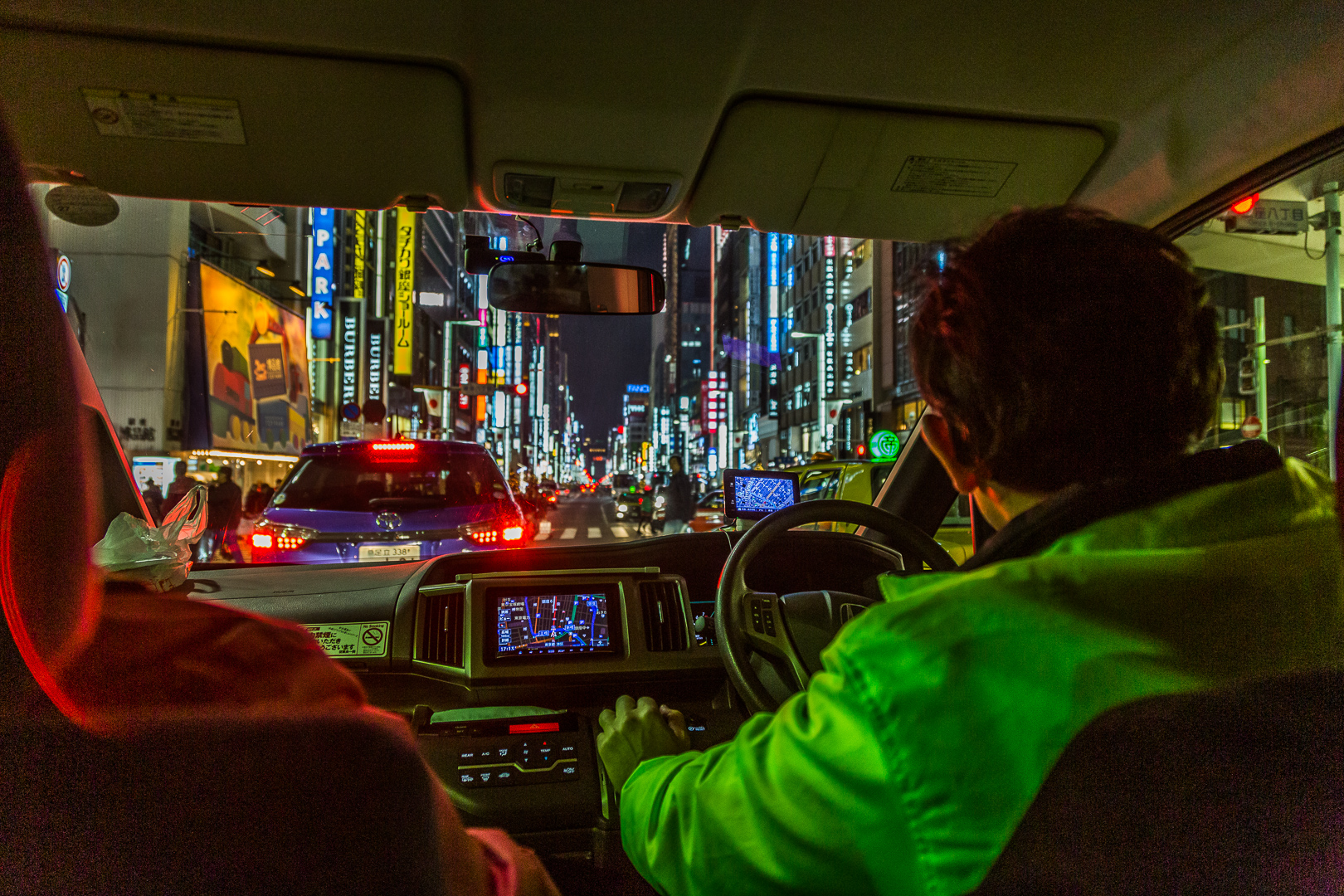
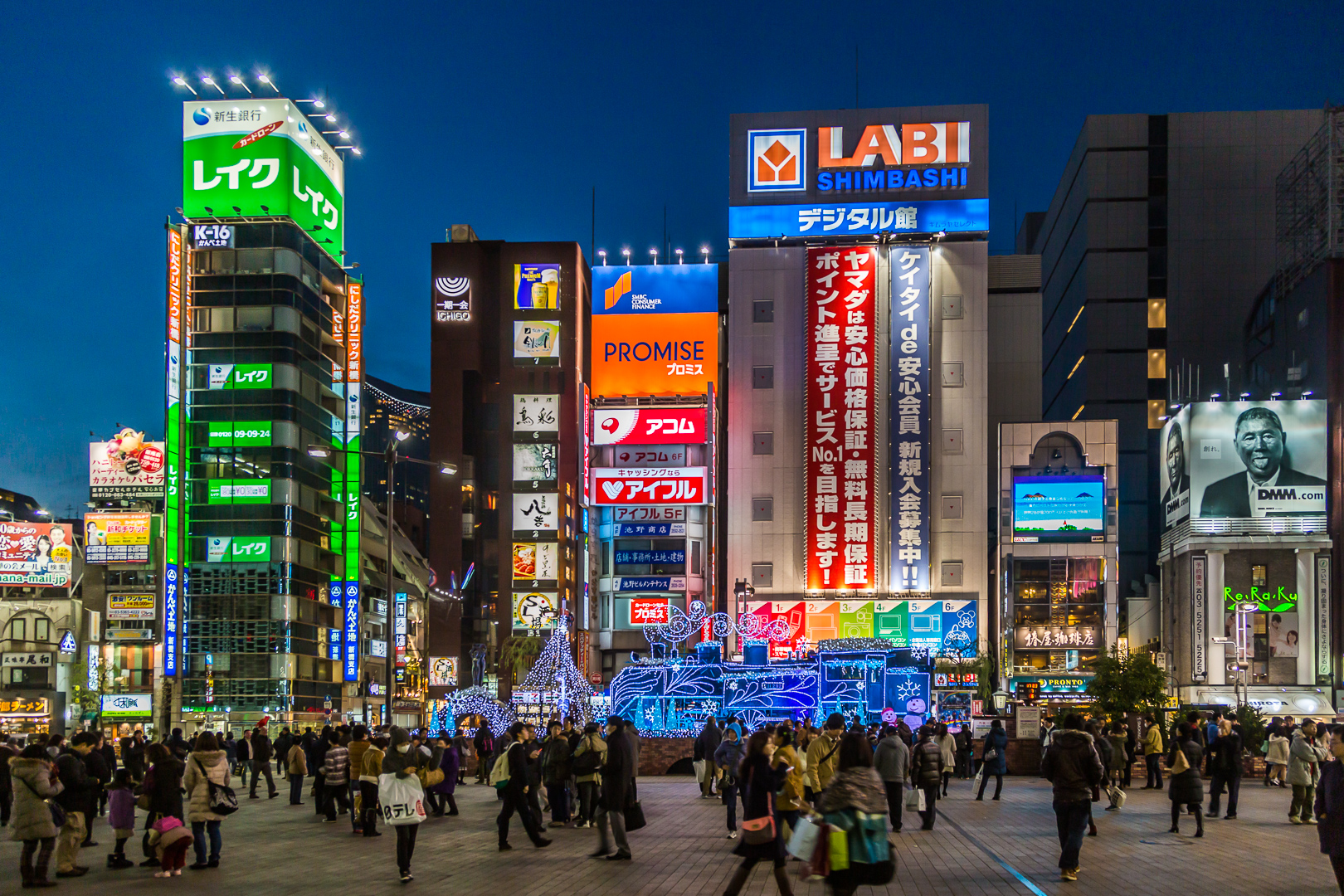
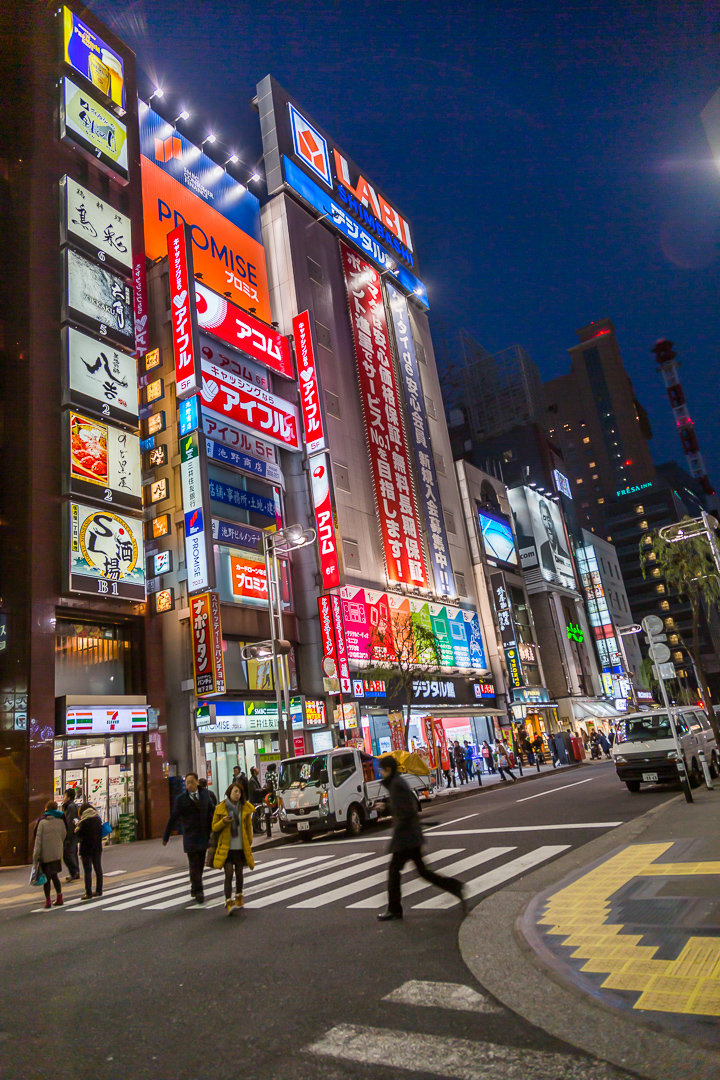
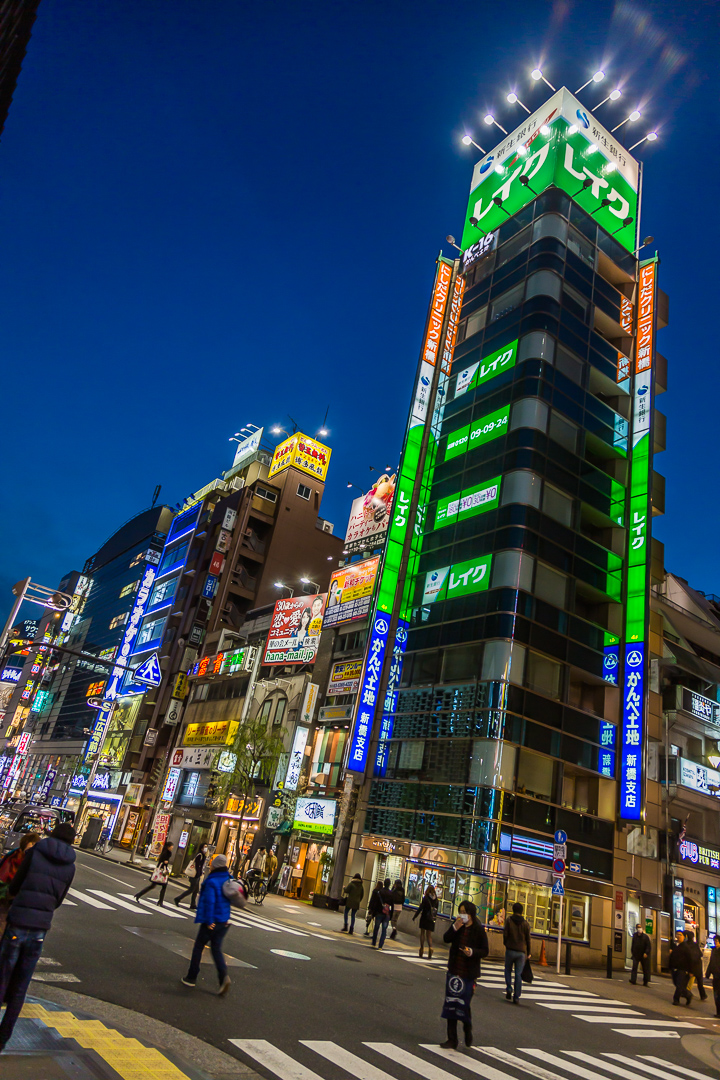
These were quite many and also very different impressions in one day and we were quite exhausted. So we went to bed quickly after a dinner at the hotel.
